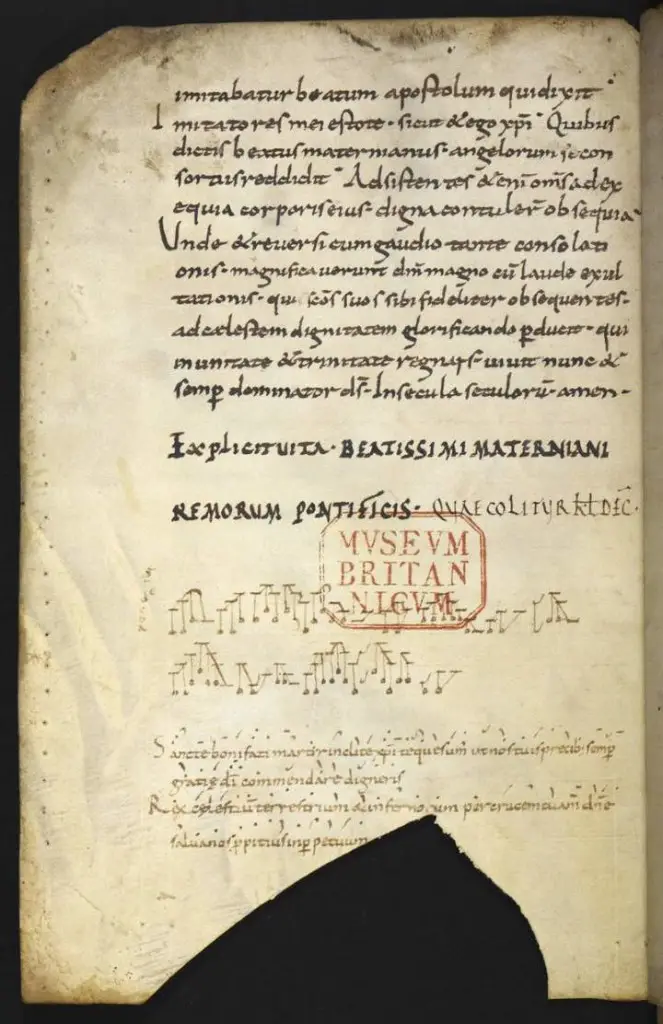The oldest known piece of polyphonic music, a piece of choral music written for more than one part, was recently found at the bottom of a 10th century manuscript in the British Library, London. It is believed to date back to the start of the 10th century and is the setting of a short chant dedicated to Boniface, patron Saint of Germany.
The piece is performed by Quintin Beer and John Clapham – both music undergraduates at St John’s College, Cambridge. The film was shot by Ryan Cronin.
The piece was discovered by Giovanni Varelli, a Ph.D. student from St John’s College, Cambridge, while he was working on an internship. He discovered the unusual notation of the music and then realized that he was looking at music written for two parts.
The oldest known piece of polyphonic music
The music consists of a brief inscription written in the blank space at the end of a short manuscript of the life of the fourth-century bishop Maternianus of Reims, written down in the early tenth century. When the manuscript was received as part of the Harley Collection in 1753, nobody paid any attention to these scribblings: the fact that our predecessors chose to deface them with the British Museum stamp is regrettable but also provides clear evidence that they were not thought to have any significance.

The notation of this music predates the use of the stave and could have easily been missed. Most modern musicians may not have been able to discern that this piece was written for two voices because it is written in an extremely old form. As Varelli studied the manuscript, he concluded that the author was writing around the year 900.
His research also indicates that the manuscript must have come from northwest Germany based on fact that the unusual notation was most frequently used in Germany at that time. The top of the page also contains a reference to a holiday being celebrated on an atypical date, a practice also rather restricted to communities in the northwest German regions.

Related: The Oldest Song in the World
Prior to the discovery of this piece, the earliest practical example of polyphonic music came from a collection called The Winchester Troper (see notes 1) that dates back to the year 1000.
Beyond the excitement over the age of the music, this piece is musicologically significant because it is not written conventionally, based on our knowledge of European music at that point. This indicates that experimentation and rule-breaking occurred even at the earliest stages of this type of music, which is contrary to expectation.
“What’s interesting here is that we are looking at the birth of polyphonic music and we are not seeing what we expected”, Varelli said. “Typically, polyphonic music is seen as having developed from a set of fixed rules and almost mechanical practice. This changes how we understand that development precisely because whoever wrote it was breaking those rules. It shows that music at this time was in a state of flux and development, the conventions were fewer rules to be followed than a starting point from which one might explore new compositional paths.”
Notes
- The Winchester Troper refers to two eleventh-century manuscripts of liturgical plainchant and two-voice polyphony copied and used in the Old Minster at Winchester Cathedral in Hampshire, England. The manuscripts are now held at Cambridge, Corpus Christi College 473 (Corpus 473) and Oxford, Bodleian Library Bodley 775 (Bodley 775).
Sources
- “Earliest polyphonic music discovered in British Library” on the British Library website
- Winchester Troper on Wikipedia